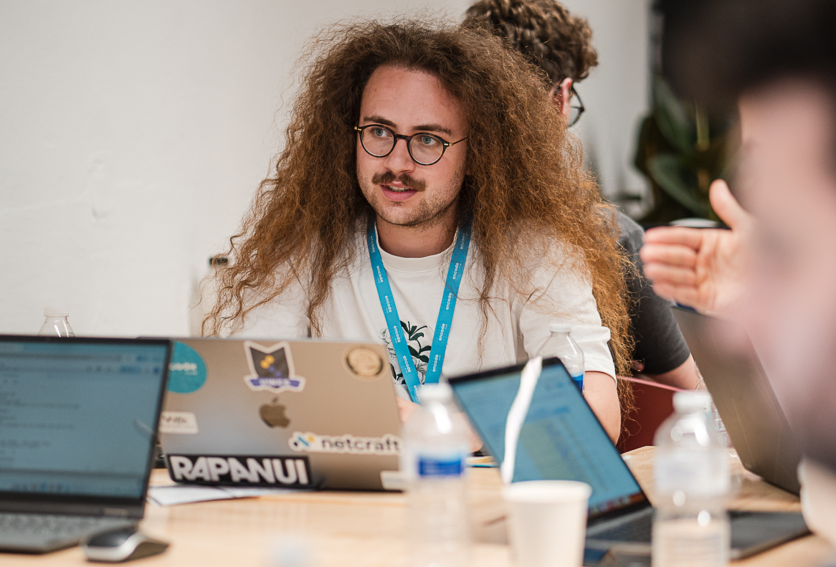
Asteroid claimed the top spot on Product Hunt within hours of going live on August 4th, eventually securing second place for the day and third for the week. Edward Upton, the company's founding engineer, had spent six months developing the technical architecture that enabled the self-serve platform. While competitors struggled with unreliable browser agents that broke during routine operations, Upton's graph-based system processed insurance quotes, healthcare appointments, and supply chain data without human intervention.
The 27-year-old from Wales constructed a platform that insurance brokers and healthcare administrators could trust with sensitive patient records and financial transactions. "Customers expect human-level accuracy from agents," Upton explained during his presentation at the MLOps Community conference. "They want systems that adapt to changes and understand context, just like a person would." His talk reached over 5,000 developers implementing similar automation systems.
Technical Architecture That Scales Under Pressure
Upton's engineering choices separated Asteroid from dozens of competitors attempting to build browser automation tools. He drove the company toward graph-based construction instead of linear execution paths. Each node in the architecture represents a discrete operation with specific parameters governing when to use cached scripts versus generative responses. Healthcare providers processing electronic health record entries and insurance companies managing carrier portal access require this granularity.
The system addresses context window expansion, a persistent challenge that agents face when handling complex, multi-step workflows. Upton built smart context pruning and subtask isolation directly into the architecture. Each component maintains focus on its assigned objective without carrying conversational history from unrelated operations. His hybrid model caches deterministic scripts for repeatable tasks but switches to adaptive responses when encountering unexpected conditions. The switching mechanism operates automatically, maintaining speed while building resilience against changes to webpages.
Document Object Model parsing provides exact element targeting when site structures remain stable. Computer vision capabilities handle situations where layouts change or dynamic content renders traditional selectors useless. Upton's experience at Netcraft, where he built fraud prevention systems for major banks, informed his understanding of what enterprises need from automation handling regulated data.
From Academic Excellence to Production Deployments
Upton graduated with first-class honors from the University of Warwick, earning recognition as the best graduating MEng student in Computer Science. His solo dissertation developed a LEGO brick identification application, while his team project built a customizable streaming platform—both of which received top marks. Years earlier, his robotics squad had won the Wales national final before claiming the best robot design award at the UK and Ireland championship. The team represented Wales at the global finals in St. Louis, finishing 44th among international competitors.
The Product Hunt reception validated months of customer feedback that Upton had incorporated into the platform's redesign. Dozens of companies had requested direct access to build their own agents rather than commissioning Asteroid's team to construct them. The rebuilt interface allows non-technical domain experts to assemble browser workflows through visual graph construction. Voice agent companies connect their conversational systems to legacy platforms that lack API access. Insurance operations pull quotes from carrier portals that were never meant for programmatic access.
Real-World Validation Drives Design Decisions
Asteroid's August debut generated thousands of new users within 24 hours and thousands of deployed browser agents during its first day of public availability. The company completed Y Combinator's winter cohort in 2025, following a six-month closed testing phase during which it built automation for enterprises.
His direct engagement with customers translates operational requirements into engineering specifications. During his MLOps conference presentation, he detailed a healthcare booking failure where an agent reached an apparent success state but had actually failed to complete the required appointment. The incident highlighted the importance of flexible evaluation systems. Different clients require different success criteria, depending on whether they're running production operations or quality assurance testing.
The platform now handles medical data entry into electronic health records, insurance claim processing across multiple carrier interfaces, and supply chain reporting between supplier portals and analytics dashboards. Upton's technical decisions continue to direct the company's product roadmap, informed by production deployments that process sensitive transactions daily. His conference talk concluded with recommendations drawn from real failures: scope what agents can access, build explicit failure points, and run evaluators as separate systems after execution completes.
ⓒ 2025 TECHTIMES.com All rights reserved. Do not reproduce without permission.




